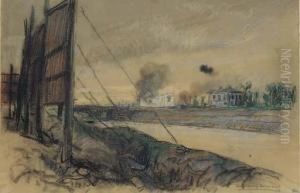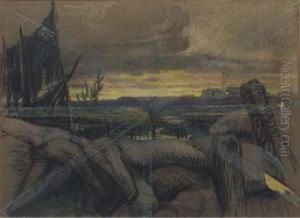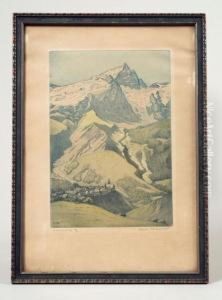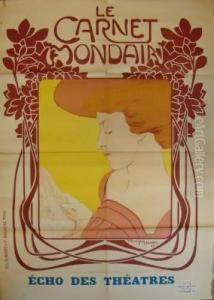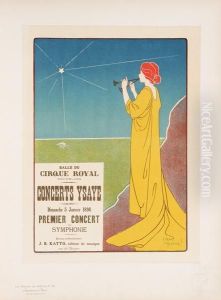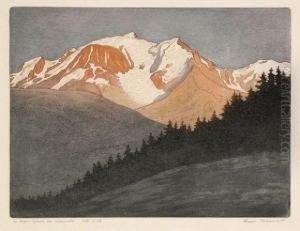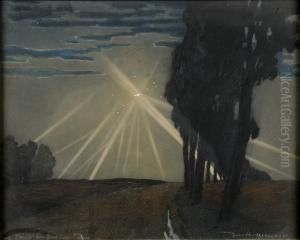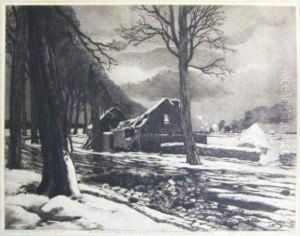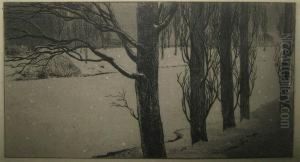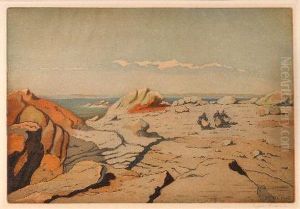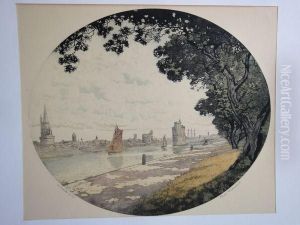Henri Georges Jean Meunier Paintings
Henri Georges Jean Isidore Meunier, born in 1873 in Ixelles, Belgium, was a notable figure in the world of art nouveau graphic design and illustration. His career spanned the late 19th and early 20th centuries, a period marked by significant evolution in art and design. Meunier was part of the vibrant Belgian art scene and was closely associated with the artistic movement known as Art Nouveau, which emphasized organic shapes, flowing lines, and often incorporated floral and other natural motifs.
Meunier was trained by his uncle, the famed sculptor and graphic artist Henri Meunier, which helped refine his skills and artistic vision. He studied at the Académie Royale des Beaux-Arts in Brussels, where he honed his abilities in various forms of art, including painting, sculpture, and graphic design. His talent was evident early on, and he quickly established himself as a prominent artist in Belgium and beyond.
He excelled in creating posters, illustrations, and decorative panels, often employing a stylized, elegant approach that was typical of the Art Nouveau movement. Meunier's work frequently featured strong, dynamic figures, and he had a keen interest in portraying social themes, particularly the plight of the working class. This was reflected in many of his posters, which combined social commentary with the aesthetic ideals of the time.
Meunier's artistic output wasn't limited to graphic art; he also explored other media, including book design and stained glass. His versatility and innovative approach to art made him a respected figure among his contemporaries. He was involved in various exhibitions and artistic circles, contributing significantly to the spread of Art Nouveau aesthetics throughout Europe.
Despite his success, Henri Georges Jean Isidore Meunier's life was relatively short. He died in 1922, leaving behind a rich legacy of work that continues to be celebrated for its contribution to the development of modern graphic design and illustration. His art remains an important part of the study of Art Nouveau and is featured in collections and exhibitions around the world.
